5 classics that just got more affordable
The Hagerty Price Guide is updated quarterly, and the methodology takes into account many factors, from auctions to private sales. For a better understanding of how we put it all together, check out this article.
At the close of 2023, you don’t need to be a statistician or religious market-watcher to see that conditions are different compared to a year ago. Our recent update of the Hagerty Price Guide brings that into clear focus. A year ago, we were in the kind of seller’s market not seen since before the Great Recession, with record prices regularly reset and drastic month-over-month appreciation. The similarities with 2008 mostly end there, though. The financial crisis 15 years ago hit the collector car market noticeably, but after a peak of the seller’s market in 2022, the market for collector cars has seen a more gradual and softer slowdown in 2023.
As buyers become more discerning with their purchases and sellers come to grips with their cars no longer bringing a premium for merely existing, the best way to describe what’s happening is air being let out of the bubble. And some sanity coming back to the market is a good thing. Prices are still high for the most part, while some enjoyable cars are trending towards becoming more accessible to the average enthusiast. Speaking of which, here are five of the most significant movers from our latest price guide update that are a lot more accessible (aka affordable) than they were at the beginning of the summer.
1956–75 Volkswagen Karmann Ghia: -16%
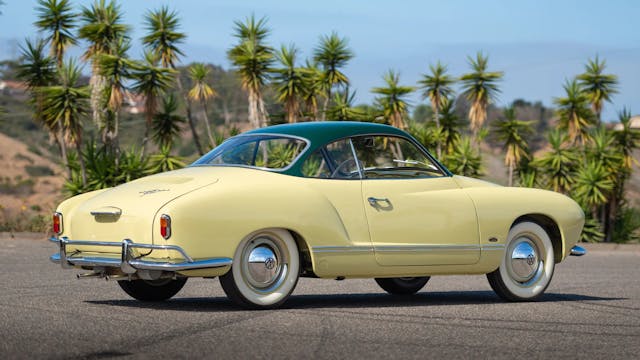
Following the success of the Beetle, Volkswagen introduced its new, upscale Type 14 Karmann Ghia for the 1955 model year. The new sporty-looking VW was a collaboration between Volkswagen, who sold the car and provided the underpinnings; Italian firm Carrozzeria Ghia, who designed the bodywork; and German coachbuilder Karmann, who put the car together. Hence the name Volkswagen Karmann Ghia. Over its nearly 20-year production run, the Karmann Ghia saw few major changes and today the biggest determining factor in price is whether or not the roof goes down.
Over the past few years, both the Karmann Ghia and Beetle have experienced astronomical gains in value. These were truly cheap cars in the not-so-distant past, but particularly since 2019 they have stretched well beyond the point of “affordable” or “entry-level” for many enthusiasts on the hunt for cheap air-cooled fun. The 16 percent decrease with this update, led by convertibles, was a notable reversal. After such a rapid climb previously, it’s reasonable to assume that buyers have reached the limit of what they are willing to spend and prices are sliding as a result. Further observation will be needed to call this a trend, however.
1952–56 Woodill Wildfire: -25%
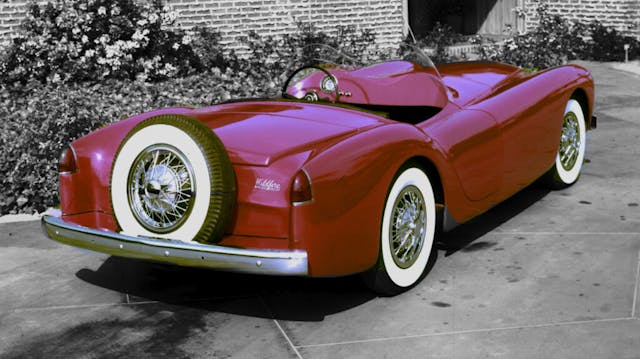
An obscure car even to many car nerds, the Woodill Wildfire is one of those fabulous pieces of forgotten fiberglass to come out of a sports car–crazy 1950s America. After the postwar explosion of independent manufacturers building their own small-batch sports cars, the 1953 Corvette was just one of many fiberglass two-seaters available, and the Vette was actually a bit late to the party. The Wildfire debuted in 1952, and was primarily sold as a kit, although a few were sold as complete cars. Only about 300 Wildfires were ever sold.
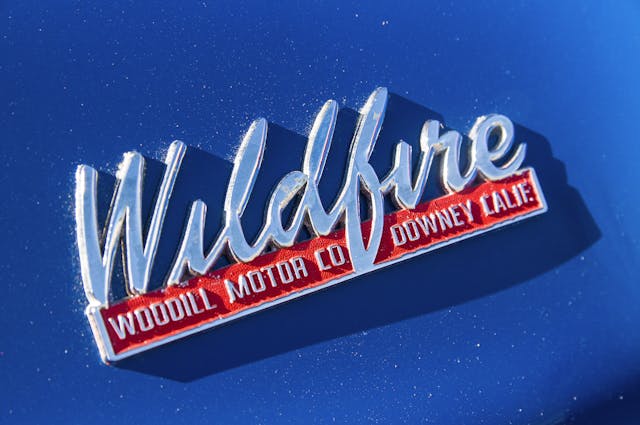
For a long time, these have been six-figure cars when in perfect condition. Not bad for an obscure plastic-bodied car, right? Recently, though, one was offered publicly and sold for $31,500, well below its price guide value. Yes, yes, “one sale doesn’t set the market.” We say that all the time, but hear me out.
When a car is so uncommon that only one example pops up every few years, each sale requires close examination. So yes, prices fell, but not nearly as hard as that sale might have suggested they should. What do we do next? Basically, wait for another to come up to give us the opportunity to check the market again, and keep an eye out for any other equally obscure fiberglass cars from the 1950s whose sales might provide a clue.
1972–76 Ford Thunderbird: -15%
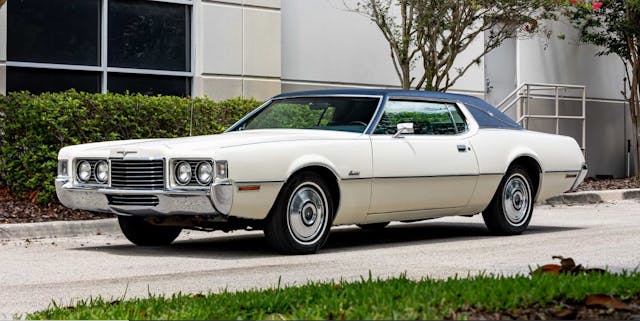
Here’s a car we almost never talk about: the sixth-generation Ford Thunderbird. As the 1970s wore on, horsepower numbers in America plunged while the cars themselves got bigger and heavier, and Thunderbirds were no exception. Built on a shared platform with the Continental Mark IV, T-Birds got straight-up huge. With a big ol’ 460-cubic-inch engine making (just barely) over 200 hp, these were not the pinnacle of speed. But speed was never the point of this personal luxury coupe, and more sheetmetal meant more style in the ’70s.
To put the T-Bird’s 15 percent drop into context, these have never been expensive cars, and the median #2 (Excellent) value is just $18,000. 1970s luxury cars have never been the darling of the collector car hobby. With the exception of certain Corvettes and a few other sportier cars, domestics of this era are typically very affordable. The 1972–76 Thunderbird did see sizable growth during 2020 and 2021, but everything has a ceiling, even if it’s a low one. T-Birds in #2 condition peaked just over 22 grand this summer, but both confirmed sales and most listings are lower in recent months, suggesting the transition to a buyer’s market.
A 15 percent drop on a relatively inexpensive car is not a lot dollar-wise, but in this case it’s still worth keeping an eye on. Whether this is a leading indicator that mid-’70s American luxury barges are cooling or just a small blip on the radar, time will tell: We may need a few more updates of the price guide to fully suss out.
1956–59 Lancia Aurelia B24 Convertible: -12%
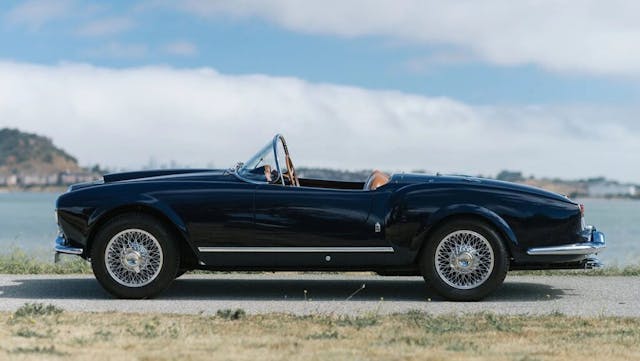
While Lancia did amazing things in the rally world during the 1970s–90s, it screwed together some fantastic cars during the 1950s and ’60s as well. Case in point: the Aurelia. Both beautiful and innovative, it used a V-6 engine, incorporated a transaxle for improved balance and weight distribution, and even rode on radial tires, all of which was very advanced stuff in the 1950s.
Since Aurelias came in several specs and body styles, their prices range widely, with the special-bodied Spider America selling for over $1M in clean condition. In the latter part of the summer, Coupes and Spiders slid a bit in value, but the Convertible saw the most downward movement. We observed several offerings at Monterey in August, all of which failed to meet expectations. But while the slide of this lesser-known Italian car may not be newsworthy, we observed a softening market for a lot of the high-end Italian sports car market from this era post-Monterey.
1957–61 Jaguar XK150 -13%

Jaguar’s famous XK-series of postwar sports cars ended with the XK150, which debuted in 1957 and was eventually succeeded by the E-Type in 1961. Stylistically, the XK150 was an evolution of the XK120 and XK140 with a slightly more streamlined body, one-piece windshield, and interior improvements like a leather-wrapped dash. Mechanically, the most significant upgrade was the availability of a larger, 3.8-liter engine and disc brakes.
Of the XK150s we track, Drophead Coupes (Convertibles to us Americans) and Roadsters saw the most movement. As with many cars at this price point, much of the auction data we had to work with this past period came out of the Monterey sales. While no concours-grade cars were tracked at the sales, a number of good-condition cars came to market, with all of them selling for lower than expected prices, which suggests that the market for these cars is truly softening.
***
Check out the Hagerty Media homepage so you don’t miss a single story, or better yet, bookmark it. To get our best stories delivered right to your inbox, subscribe to our newsletters.
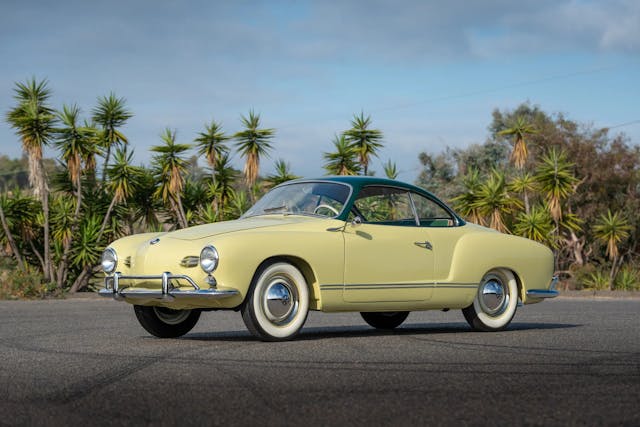
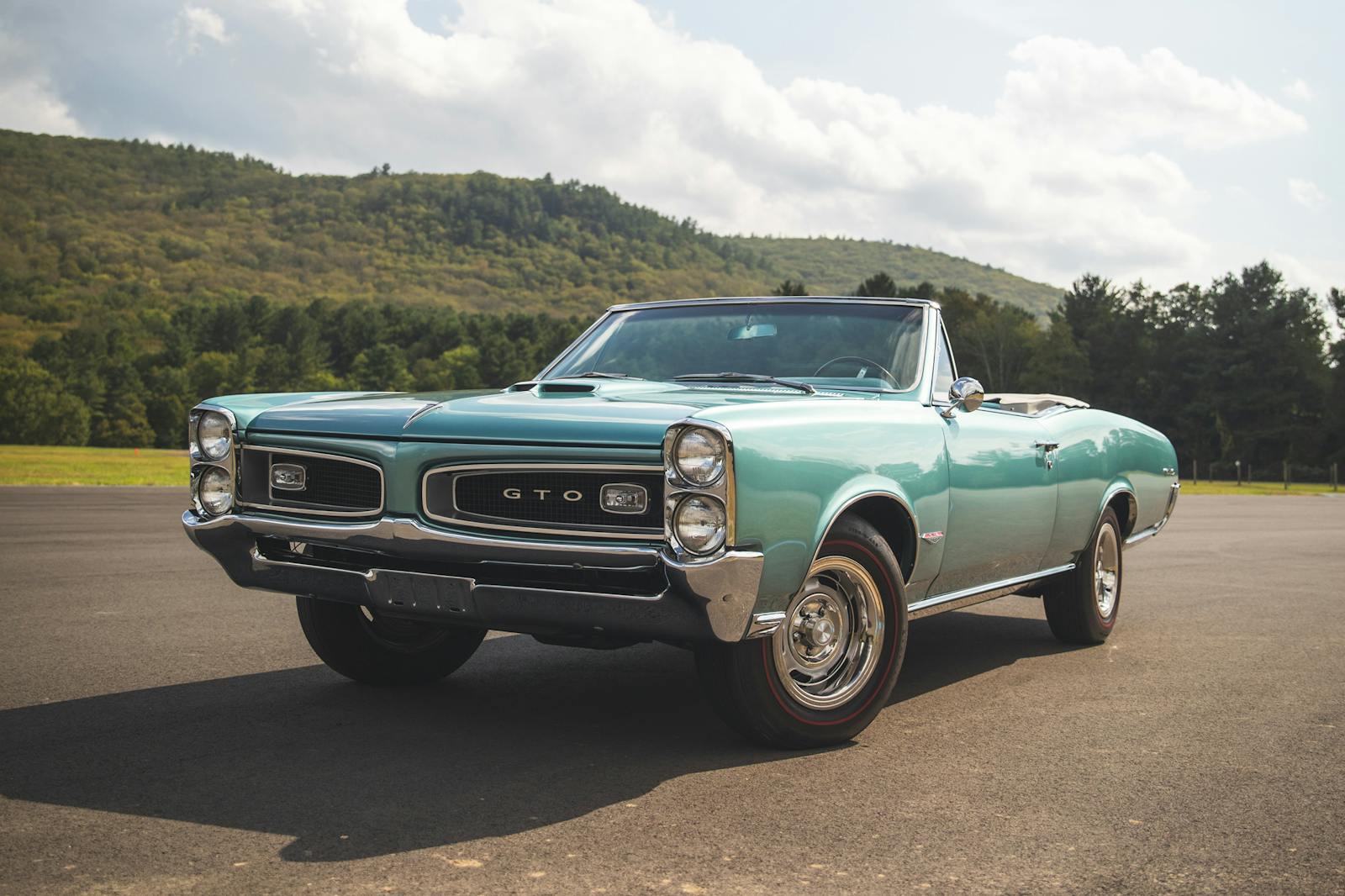

The T bird is the only one that sells often here and that 15% could just be condition only or just a bidding war between two guys that really were not that inspired.
With so little and varied data each auction is going to be a new adventure in value.
My thought exactly.
Greg, the thunderbird was based on the Lincoln Continental Mark IV platform. Your article by leaving off the Mark IV designation misleads your readers to believe it was based on the Town Car platform which it is not. Note the similarities between the Marks IV and V to the T-Birds as we progressed through the seventies especially the dash and interiors.
You are very right, thank you for pointing out that needs clarification. I have fixed that, both the text and the hyperlink to my Mark IV Vellum Venom column.
Pretty sure the article points out the t-bird was based on the Mark IV. just sayin
Kind of a stretch to say ‘more accessible’ when the drop is from $350k to $310k…
’70s Fords as “classics”? What are you guys smoking?
I thought the same. Small market for them and not very attractive
a classic is 40 yrs old or Older-
Better than any junk from gm in the 70s.
I own a 1988 Chrysler LeDaron Convertible in excellent condition. There was 38,000 made that year and I hardly ever see any of them. I get so many compliments on this cars looks and yet it gets little recognition. Why?
Nothing special about them, will never really be collectible (well, maybe in 50 years). But neat car to enjoy.
It would get far more recognition if it were the Jon Voight / George Costanza car.
Several notable reasons. Front wheel drive, typical poor Chrysler quality of that era and poor performance.
I used to call them K-mart cars and my family was a 2-generation Chrysler dealer for 30 years. They were a sad end to a glowing engineering past.
K cars and those built off that platform were great little cars. Had new 81 Aries, 85 voyager, a couple Shadows, 99 Breeze and 04 Stratus. They were totally trouble free, all got excellent gas mileage and comfortable. If you look at new cars today and how they are put together I would say Chrysler engineering was still ahead of the times. That’s the biggest reason why Mercedes bought Chrysler to get they engineering.
It should be very rare: I’ve never heard of a LeDaron!
I’ve never seen a Chrysler LeDaron.
I have a 1984 Riviera convertible In pristine condition The only made 500 that year made the Riviera from 1979 to 1985 gorgeous car no one ever talks about it These cars get no recognition whatsoever You people have no idea what’s going on as far as classic cars
I think Hagerty has a great idea what’s going on as far as classic cars. You feel snubbed because yours wasn’t on the list? Most car enthusiast get the most popular cars will get the support, recognition, aftermarket, sales. Your Riv is certainly noteworthy and honestly a beautiful design, but rarity doesn’t automatically mean classic. It’s based on a larger scale of appreciation.
A classic is 40 yrs & older–Popular is another story-
Rare does not equate to desirable or valuable. The reason only 500 Rivieras were made in 1984 is because almost nobody wanted on.e
Buick made the Riviera from 1963 to 1993, and then revived it in 1995 and continued production til 1999. Are you sure you know what’s going on?
Yes the Riv. ran from 63-99 but he was talking about the first FWD version that did run from 79-85. The second best looking of the Rivs. after the 63-65 car, in my opinion.
The Riv. remained RWD when Cadillac and Olds went FWD. They even had on based on the LeSabre coupe in the late 70ties. Moved with the change to the trifecta of E cars, Eldo, Toro, and Riv. FWD, not transverse, chain driven trans.
The conv was just a bad idea. The unibody could not support the structure. If you parked it in an off camber or twisted space it was a question if the doors would open!
The rare one will be the 85 T type with the non inner cooled turbo 3.8. That car shares more than a few parts with the 85-87 Grand National. I worked directly for Buick back then. We all knew that the change to the downsized car in 86 would end the personal luxury car, and it did.
I think mostly these cars were not really very popular or introduced when there were many competitive choices (or they were way over-priced) at the beginning, hence did not develop a true following that would make them popular today (OK, the Jag has always had a following, but the new XKE made many owners dump the old and jump to the new sleek machine of the 60’s). Plus, manufacturers quickly stopped production of both the car and spare parts when they saw the handwriting on the wall, making the cars even more expensive to own and maintain.
Umm, glorified, gussied up K-car perhaps? In 1997 I became the second owner of an ’82 Charger 2.2 (aka Dodge Omni) that had 18,000 miles on it. Got some attention because was so clean, but finding another buyer for it was more than difficult. Took the first offer over $1500.00 and was glad to get it. Maybe find an Imperial in the same condition as your LeBaron if you need validation on your choices.
Opinions are as they say…….
What a ridiculous list. How many Woodhill Wildfires are there in the world? The only two of importance are the shag and the Ghia
Exactly, Walt. I think Hagerty gets a little desperate for material sometimes and cobbles together a story with an appealing headline and little substance. Three of the five cars listed are simply not on most collectors short list of desirability or affordability.
I only know about the Woodhill Wildfire because of my interest in sports-racing specials of the 50’s & 60’s, and I’m 72 years old. First heard of them back in about 1969, as one of my college profs raced one in Southern California, back in the 50’s !.
Said it handled like a drunken cow on ice…..
Who is this list for? Silly me. I thought you may have everyday car’s that may be on the list. Like price drops on Maverick’s, or mid 70’s Cordoba’s, or Pontiac Bonnevilles. (Cuz the Camaro’s, and Mustangs and Chevelle’s are their own premium breeds). Not some obscure cars that I think most people wouldn’t even stop going to the fridge for if they were on Barret Jackson or Mecum during a TV auction. I love your job. You and the weatherman. You can get it wrong 80% of the time and still get paid!
Nah, they have it tough because commenters like you come in and are 100% right 100% of the time. Absolutely infallible. No matter what they say there is always someone ready to say they missed something or go on some “what about” rant. Just because you are not interested int eh cars on this list does not means no one is. Surely you understand that.
I would surmise that the drop in price is more inline with the demise of the population that would have been interested in these, specifically in their youth. Even the venerable Muscle from the mid to late sixty’s is waning as the Generation is Pushing Mid 60’s down to mid 50’s, the peak of their available purchasing power. Hot Rods, Big Fins and the like… ok to see, we can appreciate them, but no real desire to spend money on acquiring them. With collectible being a mind set since the early 90’s, the truly interesting exceptions have been identified and squirreled away. Only the most current offering are a speculative opportunity and frankly outclass nearly anything of any vintage in performance, competency, function and form. Nostalgia is over rated. In conclusion, I would expect further divergence from peak to current valuations.
What a complete waste of time!
But you apparently read it!
And to comment…:)
When gas prices hit over $5 a gallon I saw a lot of prices change. Most real collectors/car enthusiasts want to be able to drive it once in a while. I’ve seen a lot of real nice big cars that are beautiful and reasonably priced. But then I think what it would cost to fill up that tank just to drive it one day a month. Other than my 64 corvette and 67 mustang ( both had for over 25 years) I have gone to MG’s. I have a TD, A, B, and GT. They’re cheaper to buy, good mpg, parts available, easier to work on, and just down right fun to drive! Maybe that’s the difference between “ car collector” and “car enthusiast”
If you can afford to own a “collector” car, pay insurance, storage, maintenance, and time, you should be able to buy gas, even if you have to then use additives.
I have a collector car, fits in a 3 spot modest garage, pay a couple hundred for insurance, cheapest of all my cars, and since the 70s none have needed additives what-so-ever. Any worthwhile rebuild, overhaul, resto. has the components to use today’s pump gas. I have a 11:1 70s V8, roller cam, that is perfectly happy with 91.
Maintenance? Most gearheads do their own. 28 years with mine, $2 water pump gasket, fluid changes, adjust valves, one fan belt.
I agree with Starvin Marvin.
I concur with the general theme of the comments already made and will build on them with a suggestion for a future story (or stories). I for one am not particularly interested in auction prices as they are, as pointed out amply in the comments, merely a snapshot in time, unless of course some significant volume of similar car sales are available for consideration. I think it is safe to assume that people are here because they are interested in cars. So why not produce articles about cars, not sales? I’ll prime the pump with a few ideas. How about an article about 1940’s – 50’s – 60’s station wagons? These cars have become a real oddity and I suspect people will find them interesting. You featured a beautiful Olds Vista Cruiser in a recent article, and it got positive comments so I don’t think I am going out too far on a limb here. Personally I’d love to see a ’63 Falcon Squire and maybe some long-gone marques like Packards, but pretty much anything in those decades should be fun to see. Today’s article offers an idea for a great article, featuring solely that breathtakingly gorgeous Lancia, a car I was unaware of, or the more common but always appealing Jaguar XK’s. If you want a perfect example of how such an article should be put together, look no further than another story in today’s mailing, about that spectacular black Model A. So, how about it? Let’s see some cars! That is, after all, why we are here.